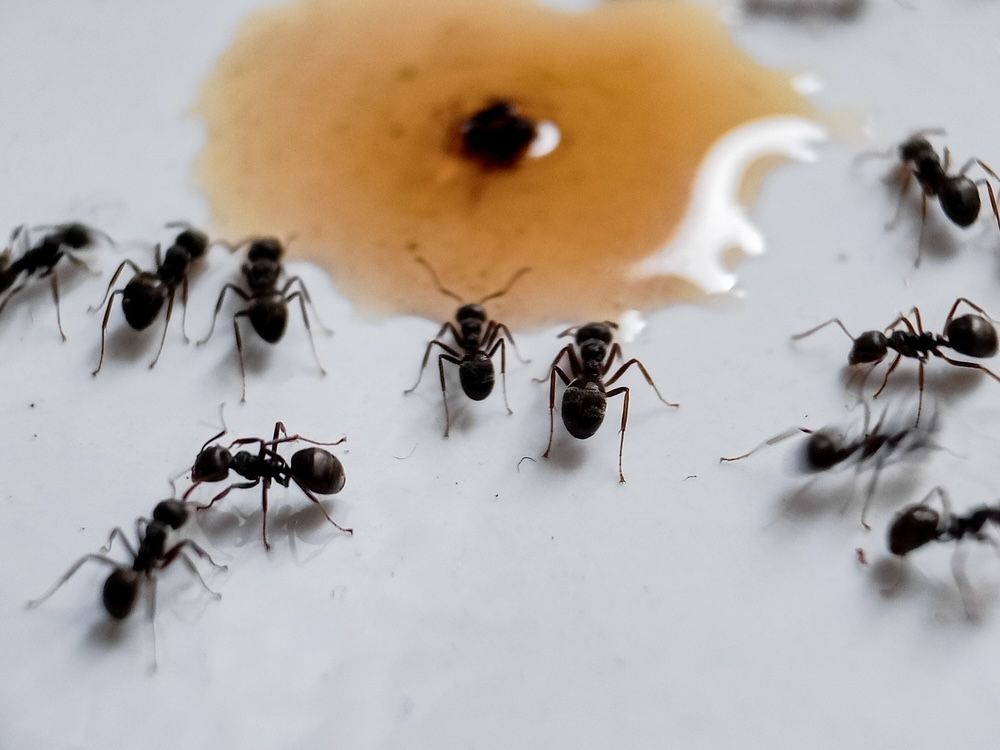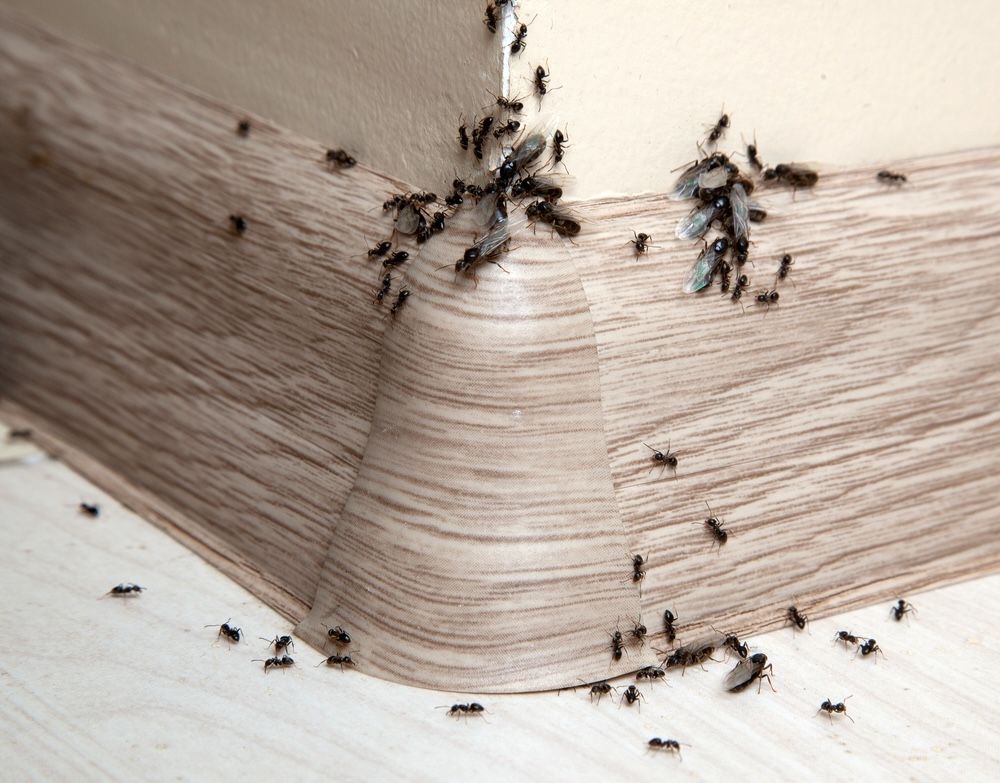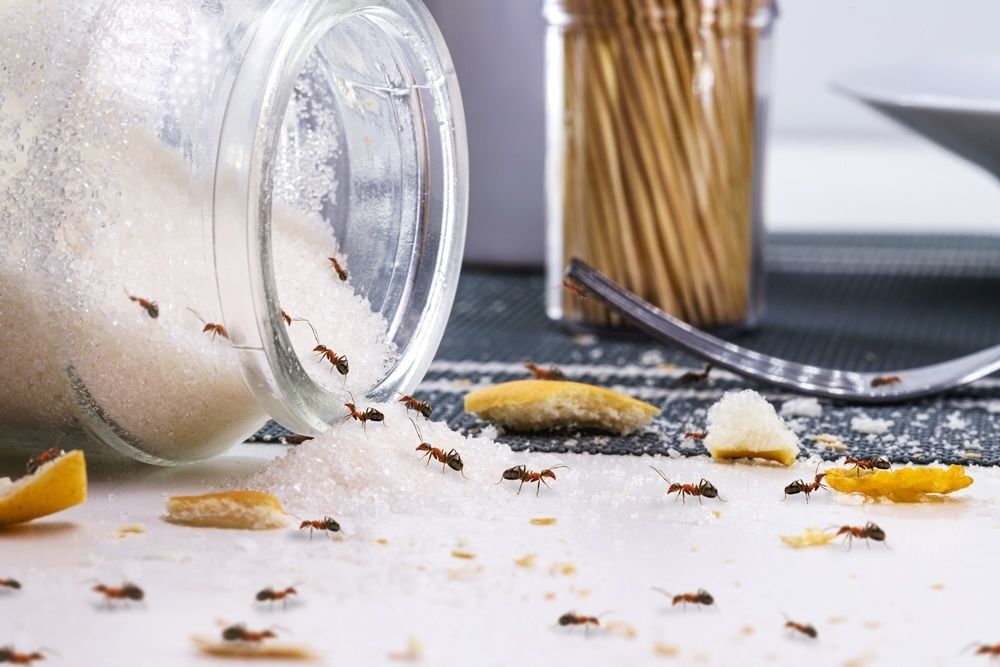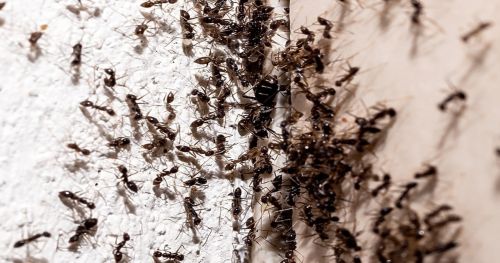Ants in the Walls: Identifying, Preventing, and Eliminating Hidden Ant Infestations

Ant infestations are a common issue in households across the globe. While it's easy to spot a trail of ants marching across your kitchen counter or a cluster of them around a sweet spill, not all ant problems are this visible. Some infestations are hidden deep within the walls of your home, where colonies can thrive unnoticed, causing damage and potential health risks. This article will provide an in-depth exploration of how to identify, prevent, and eliminate hidden ant infestations in your walls, offering homeowners the knowledge and strategies needed to maintain a pest-free environment.
Understanding Ant Behavior
Ants are incredibly social insects, living in highly structured colonies that can range from a few dozen to several hundred thousand individuals, depending on the species. These colonies operate under a complex social hierarchy, with different ants performing specific roles, such as workers, soldiers, and reproductive queens. Ants communicate through chemical signals known as pheromones, which guide them to food sources, alert them to danger, and help them navigate back to the nest.
While many ant species prefer to build their nests outdoors, some have adapted to life within human structures. Carpenter ants, for example, are notorious for nesting inside walls, using their powerful mandibles to excavate wood and create extensive tunnel systems. Unlike termites, carpenter ants do not eat wood but rather remove it to create space for their nests. This behavior can lead to significant structural damage over time if the infestation goes unnoticed.
Other species, such as odorous house ants and pharaoh ants, are also known to nest indoors, often within walls, under floors, or behind baseboards. These ants are attracted to the warmth, protection, and food sources that human homes provide. Understanding the behavior and nesting habits of these ants is crucial for effective identification and control.

Signs of Ants in the Walls
Detecting an ant infestation inside your walls can be challenging, as these pests are adept at hiding and often leave little evidence of their presence. However, there are several telltale signs that can indicate a hidden ant colony within your home:
Rustling Sounds: One of the first signs of an ant infestation in the walls is the sound of rustling or crackling. This noise is often faint and may be more noticeable at night when the house is quiet. The rustling is caused by ants moving through their tunnels or excavating wood. If you press your ear against the wall and hear these sounds, it could be a sign that ants are nesting inside.
Winged Ants: The appearance of winged ants indoors is another strong indicator of a hidden colony. Winged ants, also known as swarmers, are reproductive members of the colony that leave the nest to establish new colonies. If you notice winged ants emerging from walls, windows, or vents, it likely means that the colony inside your home has reached maturity and is attempting to expand.
Hollow Sounds: Carpenter ants, in particular, are known for hollowing out wood as they create their nests. If you suspect an infestation, try tapping on the walls in different areas. If the wood sounds hollow or gives way easily, it could be a sign that ants have compromised the structural integrity of the wall.
Visible Ant Trails: While hidden infestations may be difficult to spot, ants must leave the nest to forage for food. If you notice ants entering or exiting through small cracks, gaps, or holes in your walls, it suggests that they have established a nest inside. Follow the trail to see if it leads to a potential entry point in the wall.
Frass: Carpenter ants leave behind a material called frass, which resembles sawdust or wood shavings. This is the debris they create while excavating wood for their nests. Frass is often found near baseboards, windowsills, or other areas where ants are active. Its presence is a clear sign of a carpenter ant infestation.

Preventive Measures
Preventing ants from establishing colonies in your walls requires a proactive and comprehensive approach. By addressing potential entry points, food sources, and environmental conditions, you can significantly reduce the risk of an ant infestation:
Seal Entry Points: Ants can enter your home through even the smallest cracks, gaps, or holes. Start by inspecting the exterior of your home, paying close attention to areas where utilities enter, such as pipes, wires, and cables. Seal any gaps with caulk or weatherstripping to prevent ants from gaining access. Additionally, check for cracks around windows, doors, and the foundation, and repair them as needed.
Remove Food Sources: Ants are constantly on the lookout for food, and once they find a reliable source, they will return to it repeatedly. To deter ants, keep your home clean and free of food crumbs, spills, and grease. Store food in airtight containers, particularly sweet and starchy items that attract ants. Regularly clean countertops, floors, and cabinets to remove any potential attractants. Don’t forget to clean pet food bowls and store pet food in sealed containers as well.
Manage Moisture: Ants are attracted to moisture, making leaky pipes, damp basements, and humid areas prime nesting spots. Inspect your home for any sources of moisture and address them promptly. Fix leaky faucets, pipes, and appliances, and ensure that bathrooms and kitchens are well-ventilated. Use a dehumidifier in damp areas to reduce humidity levels, and make sure your gutters and downspouts are functioning properly to direct water away from the foundation.
Trim Vegetation: Vegetation, such as shrubs, trees, and vines, can serve as bridges for ants to access your home. Keep plants trimmed back from the exterior walls, and avoid letting branches or leaves touch the house. This will reduce the chances of ants using vegetation as a pathway to enter your home.
Regular Inspections: Conduct regular inspections of your home, both inside and out, to identify potential problem areas before they become major infestations. Pay special attention to areas prone to moisture, food spills, and cracks. Early detection is key to preventing ants from establishing colonies within your walls.

Eliminating Ant Infestations in the Walls
If you suspect that ants have already made their way into your walls, taking swift and effective action is crucial to eliminate the infestation and prevent further damage. Here are several methods to address ants inside your walls:
Bait Stations: Ant bait stations are one of the most effective methods for eliminating ant colonies, particularly those hidden within walls. Place bait stations near suspected entry points, such as baseboards, wall cracks, or along ant trails. The bait is designed to attract worker ants, who will carry it back to the nest and share it with the rest of the colony. Over time, the bait will poison the entire colony, including the queen, leading to its collapse. Be patient, as it may take several days or weeks for the bait to take full effect.
Insecticide Dust: Insecticide dust is another powerful tool for targeting ants inside walls. This fine powder can be applied to wall voids through cracks, crevices, or electrical outlets. The dust adheres to the ants' bodies as they move through their tunnels, eventually killing them through contact or ingestion. Insecticide dust is particularly effective against carpenter ants, as it can penetrate deep into their nests. However, it should be used with caution and according to the manufacturer's instructions, as it can be harmful to humans and pets if not applied correctly.
Professional Extermination: For severe or widespread infestations, or if you’re unsure about the extent of the problem, it’s advisable to seek the help of a professional exterminator. A licensed pest control expert can conduct a thorough inspection of your home, identify the species of ant, locate the nest, and recommend the most appropriate treatment. Professional exterminators have access to more potent insecticides and specialized equipment that may be necessary to fully eradicate the infestation. Additionally, they can provide guidance on preventing future ant problems.

Long-Term Control
Even after successfully eliminating an ant infestation, it’s important to implement long-term control measures to prevent re-infestation and maintain a pest-free home. Here’s how you can ensure that ants don’t return:
Regular Inspections: Continue to inspect your home periodically for signs of ant activity. Check both the interior and exterior for any new cracks, gaps, or potential entry points. Look for ant trails, frass, or other indicators of infestation, and take immediate action if you detect any signs of ants.
Monitor Bait Stations: If you used bait stations to eliminate the infestation, consider leaving them in place as a preventive measure. Refill or replace the bait as needed, and position additional stations in areas where ants are likely to enter, such as near doorways, windows, and along the foundation. Regular monitoring of bait stations can help catch new invaders before they establish a colony.
Maintain a Clean Environment: Keeping your home clean and free of food and moisture is one of the most effective ways to deter ants. Continue to practice good sanitation habits, such as promptly cleaning up spills, storing food in airtight containers, and addressing any moisture issues. Regularly vacuum and wipe down surfaces to remove crumbs, grease, and other potential attractants.
Landscaping Maintenance: As part of your long-term control strategy, continue to maintain your landscaping by trimming vegetation and ensuring that plants do not touch the exterior walls of your home. Consider using ant-repellent plants, such as mint or lavender, near your home’s foundation as a natural deterrent.
Repair Structural Issues: Address any structural issues in your home that could provide ants with access or a conducive environment for nesting. This includes repairing damaged wood, fixing leaks, and improving ventilation in areas prone to moisture. If you live in an area with a high risk of carpenter ants, consider using treated wood or other materials that are less attractive to these pests.
Conclusion
Ants in the walls can pose a significant challenge for homeowners, but with the right knowledge and strategies, you can effectively identify, prevent, and eliminate these hidden infestations. By staying vigilant, maintaining a clean and well-maintained home, and taking proactive measures, you can protect your living space from these tiny yet persistent invaders. Remember, the key to long-term ant control is a combination of early detection, targeted treatment, and ongoing prevention efforts.
Topics
Check more articles on our blog

The Hidden Dangers of Dust Mites: Identification, Prevention, and Eradication

Ants in the Walls: Identifying, Preventing, and Eliminating Hidden Ant Infestations

Tips On How To Get Rid Of Cloth Moths In Your Home
